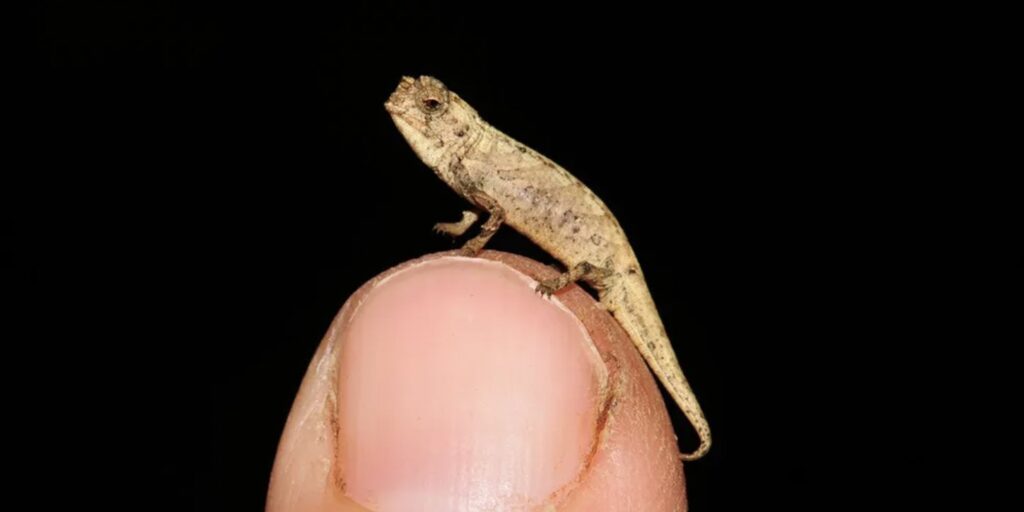Scientists found what might be the tiniest reptile on Earth in northern Madagascar’s rainforests, Jason Bittel writes for National Geographic. The tiny new lizard, called Brookesia nana, is so small that it fits on a fingertip, says a recent article in Scientific Reports.
Previously, the Caribbean gecko (Sphaerodactylus ariasae) held the record as the smallest reptile. However, this title is now questioned because only the male Brookesia nana, found by researchers, is smaller than the gecko. This male measures just half an inch from nose to tail base, Brandon Specktor reports for Live Science. The female is slightly bigger, measuring three-quarters of an inch. National Geographic notes that the previous smallest chameleon was from the same genus as B. nana, named Brookesia micra.

Mark Scherz, a study co-author and evolutionary biologist at the University of Potsdam, told National Geographic that even small size differences matter significantly when they represent a large percentage of the body size. He emphasizes that science often progresses in these tiny steps.
This adult male, the nano-chameleon (Brookesia nana), has a body size of only 0.53 inches, making it the smallest adult animal among the 11,500 known reptile species, according to Frank Glaw (SNSB / ZSM). The study also highlights that the male has unusually large genitals, nearly 20 percent of his body length. Researchers suggest that these large organs might help him mate with much larger females. The distinct shape of reptile genitals, often specific to each species, was one of the first things checked to confirm if this was a new species, Sherz explained in his tweets.

Only two individuals of this species have been recorded so far, making it unclear if the reported lengths are typical. Other members of the Brookesia genus are also small and lack significant color-changing ability, Scherz tells Isaac Shultz from Gizmodo.
Due to deforestation for agriculture and livestock, B. nana’s existence in Madagascar’s rainforests is likely at risk, Live Science suggests. However, B. nana’s habitat in the Sorata massif area has recently been declared a protected area. Still, Scherz told National Geographic that without economic changes in Madagascar, the local wildlife, including B. nana, faces a bleak future as locals must clear forests to survive.
Related Articles
Bath & Body Works forced to apologize for selling candle compared to infamous hoods
Read more
My Husband Insisted We Sleep in Separate Rooms — One Night, I Heard Strange Noises Coming from His Room and Checked It Out
Read more
You may also like
Advertisement
About Daniel Stone



